Sanjay Leela Bhansali’s Netflix series flunks in every department, bar opulence.
Akhil Arora, a member of the Film Critics Guild and a Rotten Tomatoes-certified film critic, who has been reviewing movies and TV series since 2015. He has written for NDTV and SlashFilm.
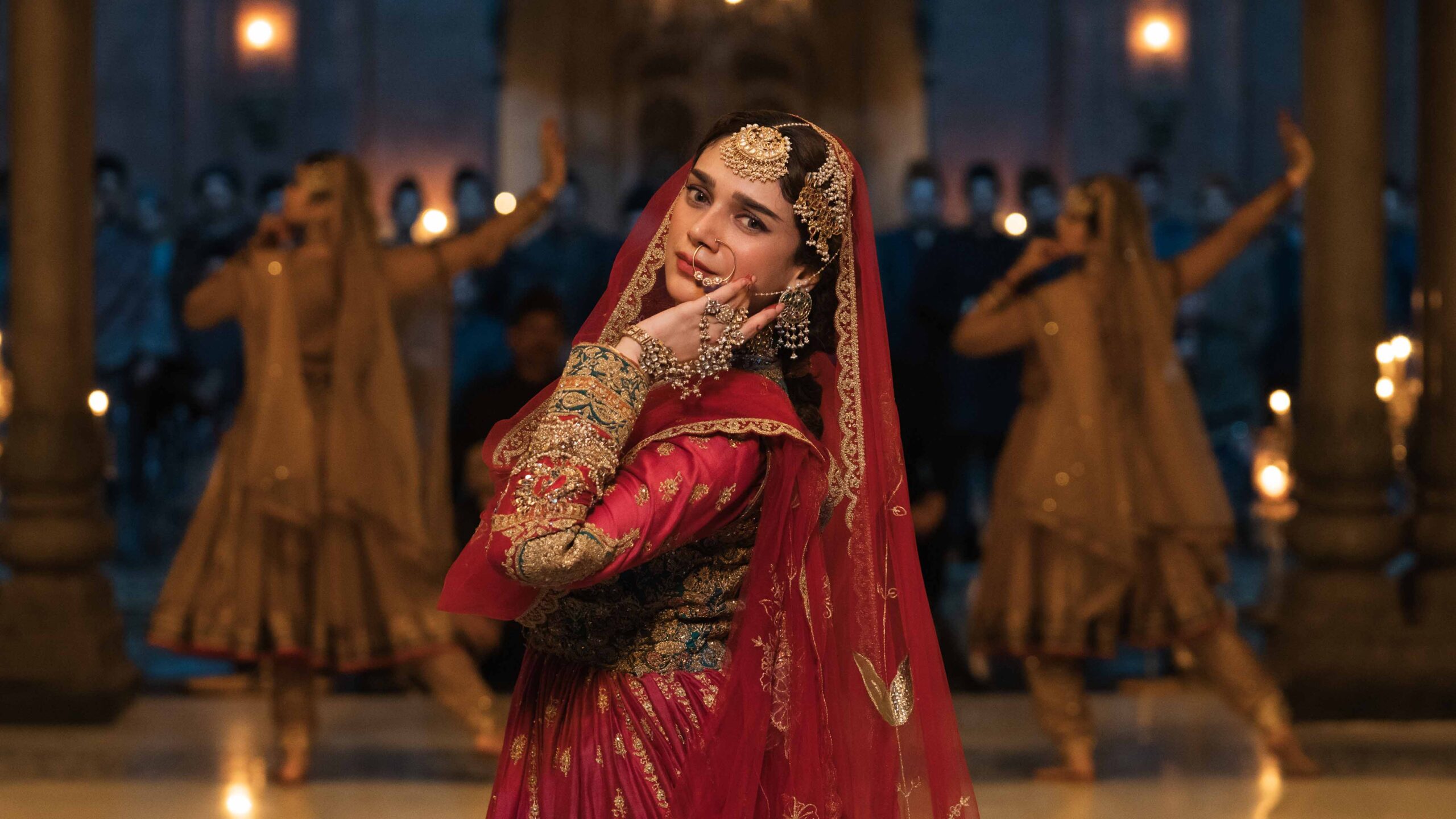
With Heeramandi: The Diamond Bazaar—the new eight-episode miniseries about the life of courtesans, set in the eponymous district of pre-independence Lahore—Sanjay Leela Bhansali has been handed the biggest budget Netflix has ever greenlit for an Indian series. By industry estimates, at over ₹200 crore (about $24 million), it’s more than double what it spent on the highly-awaited second season of Sacred Games, Netflix’s first-ever Indian original. That’s huge. More so as budgets have dried up across the country, with the streaming wars—and as a result, the Golden Age of TV—waning.
Looking at the episodes (I’ve seen all eight), it’s clear where Netflix’s money has been spent. The costumes by Rimple and Harpreet Narula are opulent—the characters of Heeramandi are always dolled up, they never dress down. Production designers Amit Ray and Subrata Chakraborty deliver extravagant sets but alas, they are too pristine to feel lived in. There’s no life in them. They look stunning—Bhansali usually keeps everything in focus—but ultimately they are hollow.
This is what we’ve come to expect from a Bhansali production. He doesn’t deviate elsewhere. Heeramandi is wildly over the top—for Bhansali, everything is super dramatic. Objects are regularly thrown into the fire, be it books, jewellery, handkerchiefs or vinyl records. People don’t talk in Heeramandi, they shout every line like it’s their dying declaration. Even in the smallest of situations, they say things like: “You haven’t broken my necklace, but my heart.”
It’s no less than a soap opera. There’s always someone listening behind a door or around the corner. Characters have evil, maniacal laughs. They plot, bicker, lash out, manipulate, and wallow in their sorrows (by sitting in fountains). In the eyes of Bhansali, the women are purely interested in stabbing each other in the back.
A bit like Gangubai Kathiawadi, with many of the same problems
This theatricality would be acceptable if Heeramandi had meat on the bones. Instead, it offers the thinnest of characters and Bhansali can never seem to decide where he stands on his female protagonists. Does he view them as women who sell their bodies and souls to survive? Or does he see them as diamonds, women who defied the odds and struggled amidst pressure to emerge as shiny objects that everyone covets? Bhansali thinks he’s spinning a women empowerment tale—the Netflix series feels like a prequel spin-off of Gangubai Kathiawadi, a return to similar territory—but the reality is far from it.
In fact, it shares many of the same problems with the Alia Bhatt-led movie. It’s driven by women and though it might pass the Bechdel test on the surface at times, what is being discussed is connected to men in power. After all, they are all courtesans. And though sex is implied across the eight episodes, Heeramandi itself is sexless. Meanwhile, the violence is there for all to see—the women endure slaps, bullets, beatings, torture, and rape (in what is a highly problematic scene).
Bhansali has cultivated an image of crafting wonderful sets and imbuing them with strong female characters. It’s a façade. It’s also time to question Bhansali’s multihyphenate status. On Heeramandi, he retains sole credit as creator, director, editor, and music composer. (Moin Beg is credited for the “original concept”.) But curiously, the Netflix series lists five “additional directors”: Vibhu Puri, Mitakshra Mukesh Kumar, Snehil Mehra, Abbhiruchi Rupal Rishi, and Ashhna Srrivastava. This is not standard. It begs the question—how much is Bhansali doing himself and how much is he delegating at this point? But if Bhansali is willing to take all the credit, he deserves all of the blame too.
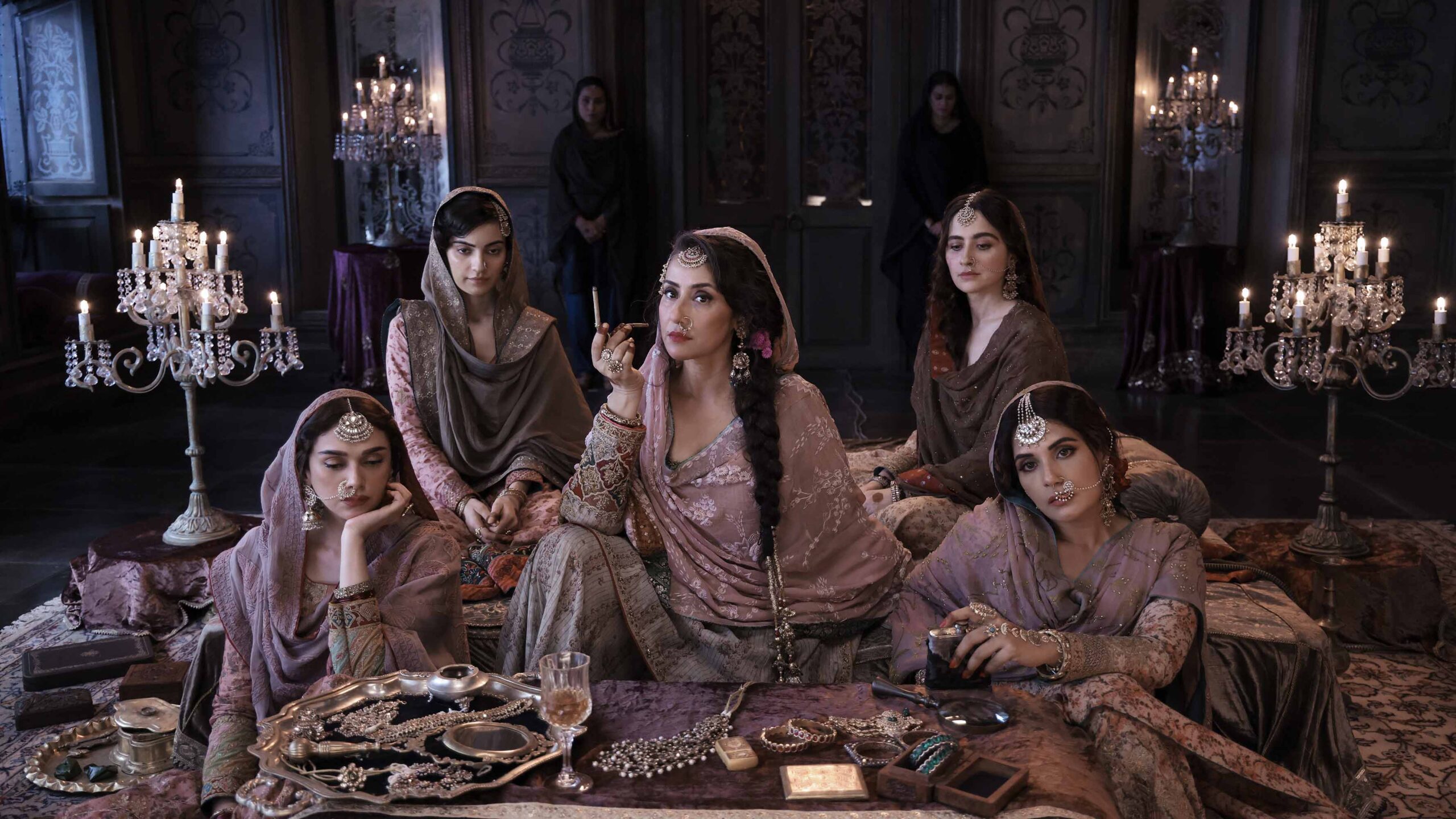
In Heeramandi, a cocktail of nawabs, tawaifs, and Quit India
After a mini prologue in the 1920s, Heeramandi jumps 25 years to introduce Mallika (Manisha Koirala), the self-styled queen of Shahi Mahal—a house of courtesans frequented by the nawabs of Lahore. In Mughal culture, they were known as tawaifs. There’s the deluded and lovelorn Lajjo (Richa Chadha) who always has a hip flask in her hands. Mallika’s sister, Waheeda (Sanjeeda Sheikh), covets the throne having suffered scars and broken promises. Waheeda gets her opportunity after the return of the daughter of Mallika’s late nemesis, Fareedan (Sonakshi Sinha), who takes over Shahi Mahal’s neighbouring mansion, Khwabgah.
That leaves Mallika’s two daughters who both yearn for freedom. Bibbo (Aditi Rao Hydari)—under the patronage of Wali bin Zayed-Al Mohammad (Fardeen Khan)—gathers intel and contributes to the revolution. Meanwhile, Alamzeb (Sharmin Segal Mehta) wishes to escape her destiny. She dreams of being a poet, but her mother wants her to join the family business. Alam not wanting to be a tawaif is the crux of Heeramandi, with Mallika pushing for her “debut” in each episode. The reading of this is very icky because it essentially centres on her implied virginity—and in turn, “purity”. The Netflix series seems to suggest that her debut as a tawaif is beyond redemption, in that she wouldn’t then deserve a life outside of Heeramandi.
As Alam and the Oxford-educated son of a nawab, Tajdar Baloch (Taha Shah Badussha), fall for each other, she believes she has found her escape. But as Mallika knows all too well, the nawabs don’t mind indulging or sleeping with the tawaifs but they will never marry one. On top of that, there are greater forces at play, with Alastair Cartwright (Jason Shah) coming into Lahore as the new superintendent of police amidst the Quit India Movement.
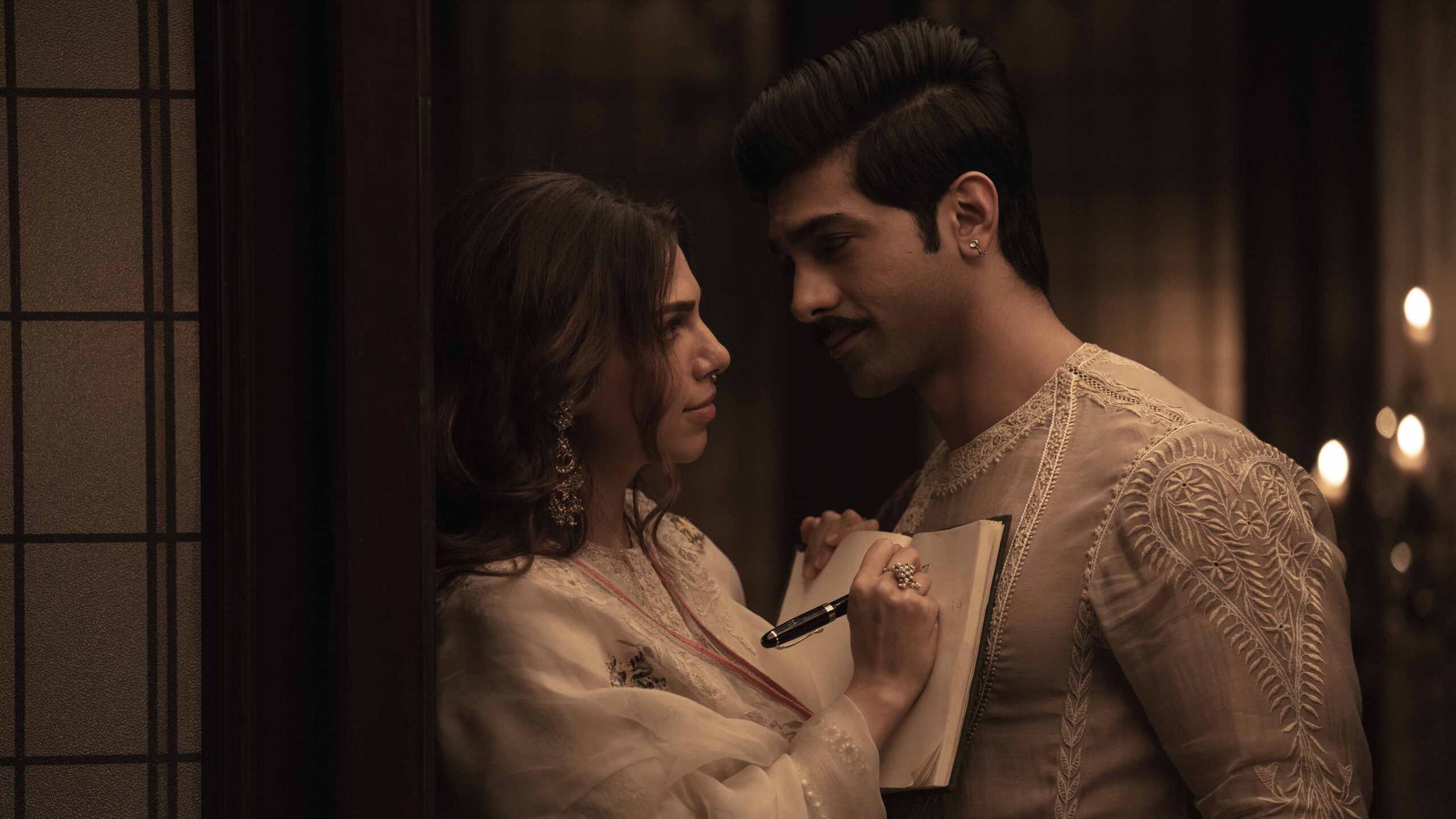
The women of Heeramandi are like children playing with fire
The women of Heeramandi are powerful and powerless at the same time. They hold sway over the nawabs to an extent but they are also stuck where they are by birth. The high-born nawabs—the erstwhile royalty, now essentially reduced to being slaves to the British—have no interest in mingling with those considered low-born. (They do not see the parallels.) But the Netflix series handles it in such a caricaturish fashion that it’s annoying to witness.
The bulk of Heeramandi, however, is spent with the women trying to attack one another. Koirala’s only job is to sell grandstanding, theatrical lines. A main character—who was barely developed—dies and the show pivots to a new plot thread two minutes later. Mallika’s servants, Phatto (Jayati Bhatia) and Satto (Nivedita Bhargava), along with the go-between Ustaad (Indresh Malik), seem to exist for comic relief or to add spice to the conflict.
The overarching feeling you get is one of children playing with fire. Despite all their cunningness, it’s like the women can’t understand or comprehend what they are putting into motion with all their scheming. Bhansali concocts nonsensical plot happenings along the way to aid the garbage narrative. And after seven episodes of bickering, he turns the women of Heeramandi into freedom fighters. Set aside the distortion of history, it’s a waste of the final episode. What existed on the margins of the Netflix series suddenly becomes the topic of import.
A disservice to those it champions
It’s clear that Bhansali has style and reverence in abundance. But that is merely not enough. Grand sets and costumes are enough for a music video, not a TV series. On Heeramandi, he’s so caught in the theatricality of it all that he ignores you need substance under all the sheen to sustain it.
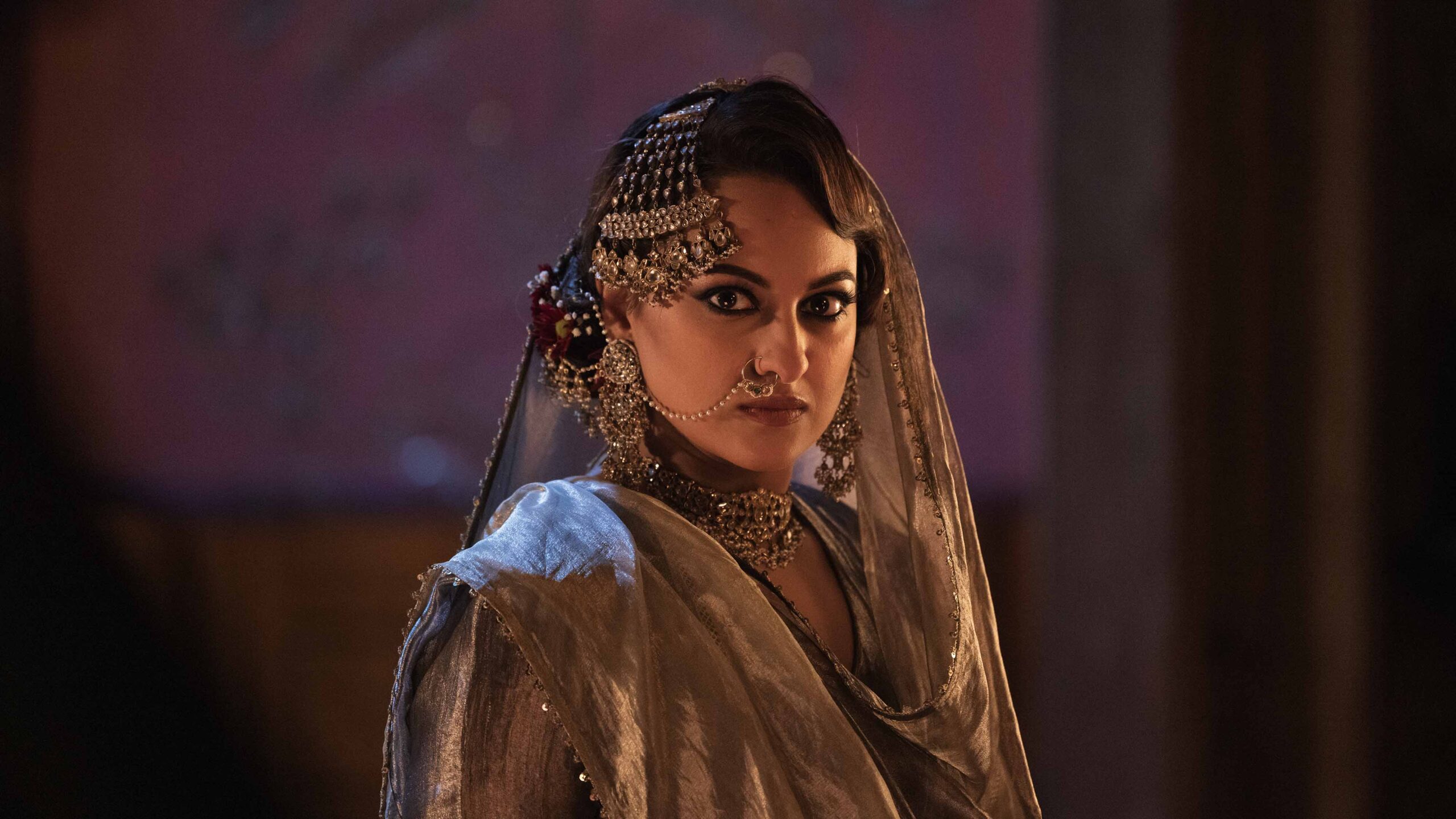
Tawaifs were artists, preservers of culture, and teachers of manners and etiquette to the nobles. It was hard work, learning from a young age and practising to be the best. But Bhansali shows no interest in the pain and perseverance. He’s happy to turn them into bickering b•••hes fighting for money, relevance, and the top spot.
Every line is a dagger, every turn of phrase an act of vengeance, every look like spitting in someone’s face. On a scale of zero to 10, Heeramandi operates at 15. By treating them as women who whine and plot and curse and cry all the time, what is Bhansali trying to say?
Chaste and sexless—there isn’t even a single kiss—but full of violence, Heeramandi feels like a betrayal of the women it seeks to champion. I’m sure a lot of work has gone into making the series but sadly, it’s all in the service of something empty.
All eight episodes of Heeramandi released on Wednesday, May 1 on Netflix worldwide.
- Every Indian Netflix original movie, ranked – October 25, 2024
- The opening night of the 2024 MAMI Mumbai Film Festival was a joke – October 19, 2024
- Agatha All Along episode 5: what time is it out? – October 9, 2024



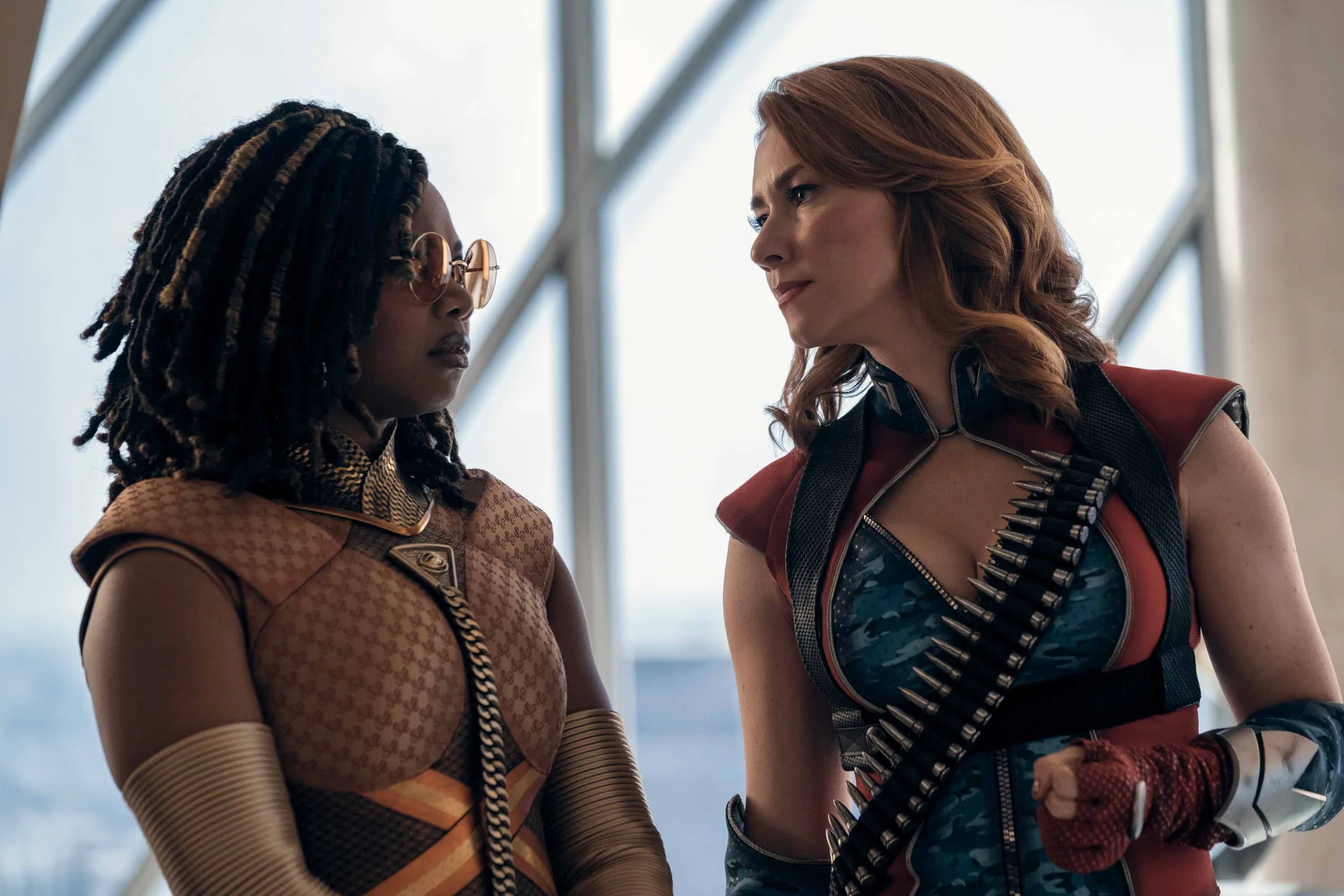
What do you think?